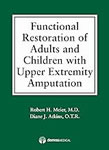All Articles
Addiction Issues & Substance Abuse
Injury
Alternative Dispute Resolution (ADR)
Insurance Coverage Analysis
Appraisal & Valuation
International Trade
Arms - Guns - Weapons
Investigation & Surveillance
Artificial Intelligence (AI) / Machine Learning (ML)
Law Enforcement
Attorney Fees
Logistics - Reverse Logistics
Automotive - Vehicular
Marketing
Bacteria - Fungus - Mold Investigation
Metallurgy
Biokinetics
Neuropsychology
Blockchain Information
Oil & Gas
Boating
Pharmacy & Pharmacology
Business Consulting
Plants & Trees
Computers
Pools and Spas (Recreational)
Crime Scene Investigation
Premises Liability
Criminology
Product Liability
Digital Forensics
Psychology
Economics
Risk Management
Education & Schools
Sexual Abuse - Molestation - Harassment
Elevators - Escalator - Automatic Doors
Slip, Trip & Fall
Eyewitness Testimony
Speech-Language Pathology
Forensic Analysis
Supply Chain Management
Forgery & Fraud
Terrorism - Homeland Security
Gems & Jewelry
Transportation
Healthcare Facilities - Hospitals
Underwriting
Hotels & Hospitality
Workplace Violence
More...

MEDICAL-PAGE ARTICLES MAIN PAGE
. Contact Us if you are interested in having your work published on our website and linked to your Profile(s).
All Articles
Accident Investigation & Reconstruction
Feng Shui
Animals
Foot / Ankle Surgery
Appraisal & Valuation
Forensics
Aquatics Safety
Gems & Jewelry
Archaeology - Archeology
Intellectual Property
Architecture
Land Use
Arms - Guns - Weapons
Laws & Procedures
Audio Forensics
Linguistics
Automotive - Vehicular
Mediation
Banking
Medical Malpractice
Biokinetics
Meditation
Business Management
Metallurgy
Chemical Industry
Mining
Child Witch Phenomenon
Oil & Gas
Corrosion
OSHA
Crisis Management
Pain Management
Discovery & Electronic Discovery
Pools and Spas (Recreational)
Documentation Examination & Analysis
Product Liability
Elevators - Escalator - Automatic Doors
Public Speaking
Energy - Utilities
Securities
Engineering
Security
Enterprise Resource Planning (ERP)
Sexual Abuse - Molestation - Harassment
Ethics / Ethical Duties
Supply Chain Management
Exercise & Fitness
Underwriting
Expert Witnessing
Warnings & Labels
More...
Featured Articles
There are no active articles here at this time. Please use the search bar, try another category, or contact us if you would like to contribute an article.
This Article is unavailable. Contact Us
Search articles by title, description, author etc.
Sort Featured Articles
Featured resources
The Ultimate Guide for Bank...
by Catherine A. Ghiglieri and Jewell D. Hoover
Life-Changing Weight Loss: Feel More...
by Kent Sasse, MD
Functional Restoration of Adults and...
by Diane Atkins, OTR, et al
Follow us










